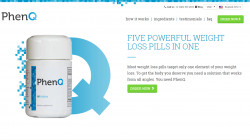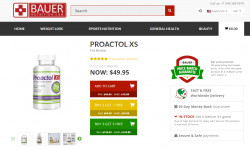In the ever-evolving world of healthcare, finding effective treatments for fungal infections can be a daunting task. That’s where Ambisom, an innovative antifungal agent, steps into the spotlight. This comprehensive review aims to shed light on Ambisom’s effectiveness, safety, and place in the treatment of fungal infections. With its unique mechanism of action, Ambisom has emerged as a key player in the fight against a wide range of fungal diseases, offering new hope to those seeking relief. Whether you’re a healthcare professional looking to expand your arsenal against fungal infections or a patient searching for effective treatment options, our in-depth analysis of Ambisom will provide you with all the information you need to make an informed decision. Stay tuned as we delve into the world of Ambisom, exploring its benefits, potential side effects, and how it compares to other antifungal agents on the market.
Ingredients of Ambisom
The main ingredient in Ambisome is amphotericin B, which is intercalated into a liposomal membrane. The liposomal membrane consists of several other components, including:
- Amphotericin B: A potent antifungal agent that is the active ingredient in Ambisome.
- Alpha Tocopherol (Vitamin E): An antioxidant that may be used in the formulation to protect the lipids in the liposome from oxidation.
- Cholesterol: A component of the liposomal membrane that helps to stabilize the liposomes and control their fluidity.
- Distearoyl Phosphatidylglycerol, Sodium Salt (DSPG): A phospholipid that contributes to the formation and stability of the liposomal membrane.
- Hydrogenated Soy Phosphatidylcholine (HSPC): A phospholipid derived from soy that is a major component of the liposomal membrane, contributing to its structural integrity.
Ambisome is designed for intravenous infusion and is used in the treatment of various fungal infections and visceral leishmaniasis. The liposomal formulation enhances the delivery of amphotericin B, reducing its toxicity while maintaining its antifungal efficacy.
Potential Side Effects of Ambisom
Ambisom, known by its generic name amphotericin B liposomal, has a range of potential side effects that vary in frequency and severity. Here’s a list summarizing these effects:
- Common Side Effects: These include chills, fever, irregular heartbeat, muscle cramps or pain, unusual tiredness or weakness, abdominal pain, cough, diarrhea, dizziness, nausea, vomiting, and more. These side effects are usually less severe and may go away as your body adjusts to the medication.
- Less Common Side Effects: Back pain, chest pain, dark urine, difficulty in breathing, headache, and yellowing of the eyes or skin are less frequent but may require medical attention.
- Rare Side Effects: Some rare but serious side effects include difficulty in swallowing, hives, itching, especially of the feet or hands, reddening of the skin, especially around the ears, swelling of the eyes, face, or inside of the nose, and sudden and severe unusual tiredness or weakness.
- Metabolic Issues: Very common metabolic side effects include hypokalemia, hyperglycemia, hypomagnesemia, hypocalcemia, among others, indicating a significant impact on the body’s electrolyte and metabolic balance.
- Renal Effects: Increased creatinine and BUN levels indicate potential kidney issues, which are very common with Ambisom. Acute kidney failure is less common but a significant risk.
- Hematologic Effects: Anemia, leukopenia, and thrombocytopenia are among the blood-related side effects that occur very commonly with the use of Ambisom.
- Cardiovascular Issues: Hypertension, hypotension, chest pain, and other heart-related side effects are common, reflecting the potential impact of Ambisom on cardiovascular health.
- Respiratory Effects: Dyspnea, cough, lung disorders, and epistaxis are very common, indicating the potential for respiratory issues during treatment.
- Gastrointestinal Effects: Nausea, vomiting, diarrhea, and abdominal pain are very common, with gastrointestinal hemorrhage being less frequent.
- Other Notable Effects: Fever, peripheral edema, asthenia, and headache are also very common, impacting the overall well-being of the patient.
- Dermatologic and Genitourinary Effects: Rash and pruritus are common skin-related side effects, while hematuria is a common genitourinary issue.
- Psychiatric and Immunologic Effects: Insomnia, anxiety, and confusion are common, alongside sepsis and infections, indicating the broad impact of Ambisom on various body systems.
What people are saying about Ambisom
Ambisome, known generically as Amphotericin B liposomal, is a medication primarily used for treating serious and life-threatening fungal infections, including leishmaniasis and certain forms of meningitis in people with HIV. It is not intended for minor fungal infections like yeast infections of the mouth, esophagus, or vagina. The medication is administered as an infusion into a vein, typically under the supervision of a healthcare provider, and the infusion process can take about 2 hours. The duration of treatment with Ambisome can extend to several weeks or months, depending on the specific infection being treated.
Patients considering Ambisome treatment should inform their healthcare providers if they have a history of kidney or liver disease or an electrolyte imbalance. It’s also crucial to discuss pregnancy and breastfeeding intentions with a healthcare provider since it’s unclear whether Ambisome can affect an unborn baby or if it passes into breast milk.
During the infusion, some patients may experience side effects such as dizziness, nausea, light-headedness, sweating, or changes in body temperature. In more severe cases, patients might encounter issues like kidney problems, electrolyte imbalances, liver problems, and signs of allergic reactions. Less severe side effects can include stomach pain, trouble breathing, chills, weakness, and rashes. It’s essential for patients to communicate any side effects, especially severe ones, to their healthcare provider immediately.
Given the potential for drug interactions and adverse effects, patients are advised to share a complete list of their medications and health conditions with their healthcare providers before starting treatment with Ambisome. This ensures that the treatment is safe and suitable for their specific health situation.
About the company behind Ambisom
Gilead Sciences, Inc., the company behind Ambisome, is a biopharmaceutical entity renowned for its significant contributions to medicine, particularly in the realm of antiviral drugs. Gilead embarked on its journey towards becoming a public company in the early 1990s, securing substantial private equity financing before making its initial public offering (IPO) in January 1992. The IPO was a resounding success, generating proceeds well above expectations and marking the beginning of Gilead’s sustained engagement with Wall Street to fund its research and development endeavors.
In its formative years, Gilead focused on developing small molecule antiviral therapeutics, a direction informed by nucleotide compounds licensed from European academic laboratories. Despite not having a pharmaceutical product in the market initially, Gilead generated revenue through research and development projects with various partners, including significant work to combat cancer and tropical diseases like malaria and Dengue fever. A notable milestone in Gilead’s history was the development of Vistide, its first product, aimed at treating CMV retinitis, an AIDS-related eye disease.
The late 1990s and early 2000s were characterized by rapid sales growth for Gilead, propelled by the acquisition of NeXstar Pharmaceuticals Inc. This merger was strategic for Gilead, granting it access to AmBisome, an injectable antifungal medication, and expanding its footprint in the pharmaceutical industry. Gilead’s portfolio continued to grow, with significant additions like Vistide for CMV retinitis and later, Viread for HIV treatment, reinforcing its focus on infectious diseases.
Gilead Sciences has maintained a strong commitment to global health, as evidenced by its efforts to ensure the accessibility of Ambisome in low- and middle-income countries, especially for the treatment of visceral leishmaniasis and cryptococcal meningitis. The company has recalibrated the no-profit price of Ambisome to sustain its global access program, reflecting its dedication to addressing neglected tropical diseases and advanced HIV-related disease in resource-limited settings.
Through strategic acquisitions, significant research and development investments, and a focus on infectious diseases, Gilead Sciences has established itself as a key player in the biopharmaceutical industry, with a strong emphasis on improving global health outcomes.
A look at Ambisom’s BBB profile
Gilead Sciences, the company behind Ambisome, has a profile on the Better Business Bureau (BBB) with a B- rating and is not BBB accredited. There have been 4 complaints closed in the last 3 years and 1 in the last 12 months. Customer reviews average 1 out of 5 stars based on 1 review. The company’s BBB profile includes contact information and an overview of its focus on pharmaceutical research.
Where to buy and price of Ambisom
What is the refund policy of Ambisom
The refund policy for AmBisome, which is a medication used for treating internal fungal infections, may be influenced by patient assistance programs such as the Astellas Stock Replacement Program. This specific program, provided by Astellas Pharma Inc., offers AmBisome at no cost to those who meet certain eligibility criteria. To qualify for this program, individuals must be U.S. citizens or residents of its territories, have already received the medication (as it is a hospital replacement program), and meet certain undisclosed income guidelines. The medication is sent directly to the physician’s office for the patient’s use.
It’s important to note that refund policies and patient assistance programs can vary widely and may depend on individual circumstances, such as insurance coverage, pharmacy policies, and specific program requirements. Patients interested in such programs are advised to fill out the necessary enrollment forms and consult with their healthcare provider for proper signatures and further procedures.
For specific details on eligibility, application process, and other tips for enrolling in the Astellas Stock Replacement Program for AmBisome, patients are encouraged to contact the program directly. Additionally, for information on AmBisome prices, coupons, and potential savings through discount cards, patients can refer to available resources and pharmacies.
Ambisom contact information
For assistance related to AmBisome, you can contact Astellas Pharma Support Solutions at 1-800-477-6472 for various inquiries including billing codes and other product-related support. For contact information regarding AmBisome, you can visit their official website at www.ambisome.com. This site provides comprehensive details about the product, including its indications, safety information, and usage.
Pros and cons of Ambisom
The pros and cons of AmBisome (liposomal amphotericin B) are based on its pharmacokinetics, indications, usage, and the results of clinical studies. Here’s a summary:
Pros:
- Targeted Indications: AmBisome is indicated for various severe fungal and parasitic infections, including empirical therapy for presumed fungal infection in febrile, neutropenic patients, treatment of Cryptococcal Meningitis in HIV-infected patients, and certain Aspergillus, Candida, and Cryptococcus species infections refractory to other treatments. It’s also used for visceral leishmaniasis, especially in immunocompromised patients.
- Pharmacokinetics: The pharmacokinetics of AmBisome, such as its distribution, metabolism, and excretion, have been studied, showing that it achieves steady-state concentrations within 4 days of dosing without significant drug accumulation in the serum. It’s been successfully administered to patients with pre-existing renal impairment.
- Clinical Efficacy: Clinical studies support the efficacy and safety of AmBisome, including controlled and uncontrolled studies involving patients with systemic mycoses, empirical therapy, and visceral leishmaniasis. These studies have shown therapeutic success in treating these conditions.
Cons:
- Adverse Reactions: While AmBisome is generally less toxic than other forms of amphotericin B, it can still cause adverse reactions, including infusion-related reactions like chills, fever, nausea, and hypoxia. Other common adverse effects include rash, hyperglycemia, hypokalemia, and hypomagnesemia.
- Limited Information on Certain Populations: The pharmacokinetics of AmBisome in pediatric and elderly patients, as well as the effects of hepatic impairment on the disposition of amphotericin B after administration of AmBisome, have not been extensively studied.
- Renal Impairment Concerns: Although AmBisome has been administered to patients with pre-existing renal impairment, the complete effects of renal impairment on the disposition of amphotericin B after AmBisome administration have not been fully studied.
These points offer a balanced view of AmBisome’s benefits and potential drawbacks, helping healthcare professionals and patients make informed decisions about its use.
Is Ambisom worth a try?
Whether AmBisome is worth trying depends on the specific fungal infection being treated and the patient’s overall health condition. AmBisome is used for serious, life-threatening fungal infections and certain forms of meningitis in HIV-infected individuals. It’s not suitable for minor fungal infections. The medication is administered as an infusion and may require treatment for several weeks or months. Potential side effects include kidney problems, electrolyte imbalances, and infusion-related reactions. It’s important to consult healthcare providers for personalized advice based on individual health needs and conditions.
Ambisom FAQ
- What is AmBisome used for?
AmBisome is used to treat a wide range of systemic fungal infections and leishmaniasis. Conditions treated include aspergillosis, candidiasis, coccidioidomycosis, cryptococcal meningitis, histoplasmosis, and visceral leishmaniasis among others. - How does AmBisome work?
AmBisome works by binding to ergosterol, a principal sterol in the fungal cytoplasmic membrane, creating a transmembrane channel. This disrupts the membrane integrity, resulting in leakage of intracellular components and ultimately cell death. - How is AmBisome administered?
AmBisome is available for intravenous infusion. The dosage varies depending on the condition being treated, ranging from 0.25-1 mg for severe meningitis to 0.6-1 mg/kg/day for endocarditis. It should be reconstituted and diluted appropriately before use. - What are the side effects of AmBisome?
Common side effects include fever, chills, convulsions, nausea, vomiting, diarrhea, anorexia, tinnitus, vertigo, hypotension, hypertension, cardiac arrhythmias, peripheral neuropathy, and renal toxicity. - What precautions should be taken when using AmBisome?
It’s important to monitor renal and liver function due to the possibility of impairment. AmBisome is categorized under Pregnancy Category B, indicating that it should be used during pregnancy only if clearly needed. It’s also contraindicated for lactating individuals and patients receiving antineoplastics. - Are there any known interactions with AmBisome?
Increased toxicity has been observed when used with flucytosine and other nephrotoxic medications. It also antagonizes the effects of azole antifungals. - What should be done in case of an overdose?
An overdose of AmBisome may result in cardio-respiratory arrest. Immediate medical attention should be sought. - How should AmBisome be stored?
Store AmBisome at 2-8° C. Reconstituted vials are stable for 24 hours at room temperature and for one week if refrigerated. Protect from light to ensure stability.




![MealEnders Review [year] - Side Effects & Ingredients MealEnders Review ([year]) - Side Effects & Ingredients](https://www.miriamwellness.com/wp-content/uploads/2023/11/MealEnders-Review-2023-Side-Effects-Ingredients-150x150.jpg)
![Pruvit KETO OS Review [year] - Side Effects & Ingredients Pruvit KETO OS Review ([year]) - Side Effects & Ingredients](https://www.miriamwellness.com/wp-content/uploads/2023/11/Pruvit-KETO-OS-Review-2023-Side-Effects-Ingredients-150x150.jpg)
![Regal Slim Review [year] - Side Effects & Ingredients Regal Slim Review ([year]) - Side Effects & Ingredients](https://www.miriamwellness.com/wp-content/uploads/2023/11/Regal-Slim-Review-2023-Side-Effects-Ingredients-150x150.jpg)
![Olay Total Effects 7 Signs Serum Review [year] - Side Effects & Ingredients Olay Total Effects 7 Signs Serum Review ([year]) - Side Effects & Ingredients](https://www.miriamwellness.com/wp-content/uploads/2023/11/Olay-Total-Effects-7-Signs-Serum-Review-2023-Side-Effects-Ingredients-150x150.jpg)